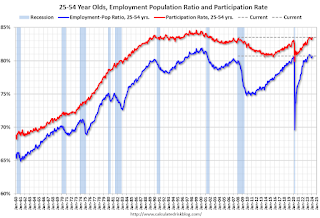Uncategorized
Lights Out for Stocks and Bonds? Not So Fast.
The stock market suddenly has the look of a wounded prize fighter. And the bond market is bordering on being dysfunctional. In a word, the market is…

The stock market suddenly has the look of a wounded prize fighter. And the bond market is bordering on being dysfunctional. In a word, the market is disoriented. Disorientation leads to mistakes.
Don't be fooled. From an investment standpoint, this is one of those periods where those who stay vigilant and pay attention to developments will be in better shape than those who remain confused by circumstances.
As I noted last week: "The relationship between interest rates and stocks is about to be tested, perhaps in a big way. Observe the tightening of the volatility bands (Bollinger Bands) around the New York Stock Exchange Advance Decline line ($NYAD) and the major indexes. This type of technical development reliably predicts big moves. The real arbiter may be the US Treasury bond market. And the place where a lot of the action may take place once bonds decide what to do next may be the large-cap tech stocks. Think QQQ."
Yeah, buddy!
Bond Yields Trade Outside Normal Megatrend Boundaries
Big things are happening in the bond market, which could have lasting effects on stocks and the US economy.
I've been expecting a big move in bond yields, noting recently that yields on the 10-Year US Treasury Yield Index ($TNX) were "on the verge of breaking above long-term resistance," while adding that if such a move took place, it "would likely be meaningful for all markets; stocks, commodities, and currencies."
Well, it happened; after the FOMC meeting and Powell's post-mortem (uh, press conference), TNX blew out all expectations and broke above the 4.4% yield area in a big way, marking their highest point since 2007. It was such a big move that it may be an intermediate-term top. At one point in overnight trading on September 21, 2023, TNX hit the 4.5% level. But the current selling in bonds is way overdone, which means that at least a temporary drop in yields is on the cards.

Here's what I mean. The price chart above portrays the relationship between TNX and its 200-day moving average and its corresponding Bollinger Bands. As I noted in my recent video on Bollinger Bands, this is a crucial indicator for pointing out trends that have gone too far and are ripe for a reversal.
In this case, TNX blew out above the upper Bollinger Band, which is two standard deviations above the 200-day moving average. That move is the magnitude of a Category 5 hurricane on steroids and amphetamines. It's also unlikely to remain in place for long unless the market is completely broken.
The price chart suggests we may see a similar situation to what we saw in October 2022 when TNX made a similar move before delivering a nifty fall in yields, which also marked the bottom for stocks.
Meanwhile, as described below, the S&P 500 ($SPX) is reaching oversold levels not seen since the October 2022 and the March 2023 market bottoms.
Stay awake.
Oil Holds Up Better Than QQQ For Now
A great way to regroup after a tough trading period is to first look for areas of the market that are exhibiting relative strength. Currently, the oil sector fits the bill. Second, it pays to look for beaten-up sectors where recoveries are happening the fastest. At this point, it's still early for that part of the equation to develop, as too many traders are still shell-shocked.
Starting with a look at West Texas Intermediate Crude ($WTIC), prices are holding above $90 as the supply for diesel and fuel is well below the five-year average. And yes, U.S. oil supplies continue to tighten while the weekly rig count falls.

The NYSE Oil Index ($XOI), home to the big oil companies such as Chevron Texaco (CVX), had a mild reaction to the heavy selling we saw in the rest of the market. XOI looks set to test its 50-day simple moving average in what looks to be a short-term pullback.

Chevron's shares barely budged earlier in the week despite an ongoing, albeit short-lived strike by natural gas workers at its Australian facilities. That's a strong showing of relative strength. You can see that short sellers are trying to knock the stock down (falling Accumulation/Distribution line), but buyers are not budging as the On Balance Volume (OBV) line is holding steady.

On the other hand, the very popular trading vehicle the Invesco QQQ Trust (QQQ) broke below the key support level offered by the $370 price point and its 20 and 50-day simple moving averages. This is an area that I highlighted here last week as being critical support. It now faces a test of the support area at $355. A break below that would likely take QQQ and the rest of the market lower.

An encouraging development is that the RSI for QQQ is nearing 30, which means it's oversold. Let's see what happens next. You can also see a similar pattern in the ADI/OBV indicators to what's evident in CVX above, which suggests that when the shorts get squeezed, it could be an impressive move up.
Join the smart money at Joe Duarte in the Money Options.com. You can have a look at my latest recommendations FREE with a two-week trial subscription.

And for frequent updates on the technicals for the big stocks in QQQ, click here.
The Market's Breadth Breaks Down and Heads to Oversold Territory
The NYSE Advance Decline line ($NYAD) finally broke below its 20 and 50-day simple moving averages and is headed toward an oversold reading on the RSI, which is approaching the 30 area.

The Nasdaq 100 Index ($NDX) followed and is not testing the 14500–14750 support area. ADI is falling, but OBV is holding up, which means we will likely see a clash between short sellers and buyers at some point in the future.

The S&P 500 ($SPX) is in deeper trouble as it has broken below the key support at 4350 and its 20 and 50-day moving averages. On the other hand, SPX closed below its lower Bollinger Band on September 22, 2023, and is nearing an oversold level on RSI. Still, the selling pressure was solid as ADI and OBV broke down.
VIX Remains Below 20
The Cboe Volatility Index ($VIX) is still below the 20 area but is rising. A move above 20 would be very negative.
When VIX rises, stocks tend to fall as it signifies that traders are buying puts. Rising put volume is a sign that market makers are selling stock index futures in order to hedge their put sales to the public. A fall in VIX is bullish as it means less put option buying, and it eventually leads to call buying, which causes market makers to hedge by buying stock index futures, raising the odds of higher stock prices.
Liquidity is Tightening Some
Liquidity is tightening. The Secured Overnight Financing Rate (SOFR) is an approximate sign of the market's liquidity. It remains near its recent high in response to the Fed's move and the rise in bond yields. A move below 5 would be bullish. A move above 5.5% would signal that monetary conditions are tightening beyond the Fed's intentions. That would be very bearish.
To get the latest information on options trading, check out Options Trading for Dummies, now in its 4th Edition—Get Your Copy Now! Now also available in Audible audiobook format!
 #1 New Release on Options Trading!
#1 New Release on Options Trading!
Good news! I've made my NYAD-Complexity - Chaos chart (featured on my YD5 videos) and a few other favorites public. You can find them here.
Joe Duarte
In The Money Options
Joe Duarte is a former money manager, an active trader, and a widely recognized independent stock market analyst since 1987. He is author of eight investment books, including the best-selling Trading Options for Dummies, rated a TOP Options Book for 2018 by Benzinga.com and now in its third edition, plus The Everything Investing in Your 20s and 30s Book and six other trading books.
The Everything Investing in Your 20s and 30s Book is available at Amazon and Barnes and Noble. It has also been recommended as a Washington Post Color of Money Book of the Month.
To receive Joe's exclusive stock, option and ETF recommendations, in your mailbox every week visit https://joeduarteinthemoneyoptions.com/secure/order_email.asp.
bonds sp 500 nasdaq stocks fomc fed us treasury etf currencies testing interest rates commodities oilUncategorized
Shipping company files surprise Chapter 7 bankruptcy, liquidation
While demand for trucking has increased, so have costs and competition, which have forced a number of players to close.

The U.S. economy is built on trucks.
As a nation we have relatively limited train assets, and while in recent years planes have played an expanded role in moving goods, trucks still represent the backbone of how everything — food, gasoline, commodities, and pretty much anything else — moves around the country.
Related: Fast-food chain closes more stores after Chapter 11 bankruptcy
"Trucks moved 61.1% of the tonnage and 64.9% of the value of these shipments. The average shipment by truck was 63 miles compared to an average of 640 miles by rail," according to the U.S. Bureau of Transportation Statistics 2023 numbers.
But running a trucking company has been tricky because the largest players have economies of scale that smaller operators don't. That puts any trucking company that's not a massive player very sensitive to increases in gas prices or drops in freight rates.
And that in turn has led a number of trucking companies, including Yellow Freight, the third-largest less-than-truckload operator; J.J. & Sons Logistics, Meadow Lark, and Boateng Logistics, to close while freight brokerage Convoy shut down in October.
Aside from Convoy, none of these brands are household names. but with the demand for trucking increasing, every company that goes out of business puts more pressure on those that remain, which contributes to increased prices.
Image source: Shutterstock
Another freight company closes and plans to liquidate
Not every bankruptcy filing explains why a company has gone out of business. In the trucking industry, multiple recent Chapter 7 bankruptcies have been tied to lawsuits that pushed otherwise successful companies into insolvency.
In the case of TBL Logistics, a Virginia-based national freight company, its Feb. 29 bankruptcy filing in U.S. Bankruptcy Court for the Western District of Virginia appears to be death by too much debt.
"In its filing, TBL Logistics listed its assets and liabilities as between $1 million and $10 million. The company stated that it has up to 49 creditors and maintains that no funds will be available for unsecured creditors once it pays administrative fees," Freightwaves reported.
The company's owners, Christopher and Melinda Bradner, did not respond to the website's request for comment.
Before it closed, TBL Logistics specialized in refrigerated and oversized loads. The company described its business on its website.
"TBL Logistics is a non-asset-based third-party logistics freight broker company providing reliable and efficient transportation solutions, management, and storage for businesses of all sizes. With our extensive network of carriers and industry expertise, we streamline the shipping process, ensuring your goods reach their destination safely and on time."
The world has a truck-driver shortage
The covid pandemic forced companies to consider their supply chain in ways they never had to before. Increased demand showed the weakness in the trucking industry and drew attention to how difficult life for truck drivers can be.
That was an issue HBO's John Oliver highlighted on his "Last Week Tonight" show in October 2022. In the episode, the host suggested that the U.S. would basically start to starve if the trucking industry shut down for three days.
"Sorry, three days, every produce department in America would go from a fully stocked market to an all-you-can-eat raccoon buffet," he said. "So it’s no wonder trucking’s a huge industry, with more than 3.5 million people in America working as drivers, from port truckers who bring goods off ships to railyards and warehouses, to long-haul truckers who move them across the country, to 'last-mile' drivers, who take care of local delivery."
The show highlighted how many truck drivers face low pay, difficult working conditions and, in many cases, crushing debt.
"Hundreds of thousands of people become truck drivers every year. But hundreds of thousands also quit. Job turnover for truckers averages over 100%, and at some companies it’s as high as 300%, meaning they’re hiring three people for a single job over the course of a year. And when a field this important has a level of job satisfaction that low, it sure seems like there’s a huge problem," Oliver shared.
The truck-driver shortage is not just a U.S. problem; it's a global issue, according to IRU.org.
"IRU’s 2023 driver shortage report has found that over three million truck driver jobs are unfilled, or 7% of total positions, in 36 countries studied," the global transportation trade association reported.
"With the huge gap between young and old drivers growing, it will get much worse over the next five years without significant action."
Related: Veteran fund manager picks favorite stocks for 2024
bankruptcy bankruptcies pandemic stocks commoditiesUncategorized
Wendy’s has a new deal for daylight savings time haters
The Daylight Savings Time promotion slashes prices on breakfast.

Daylight Savings Time, or the practice of advancing clocks an hour in the spring to maximize natural daylight, is a controversial practice because of the way it leaves many feeling off-sync and tired on the second Sunday in March when the change is made and one has one less hour to sleep in.
Despite annual "Abolish Daylight Savings Time" think pieces and online arguments that crop up with unwavering regularity, Daylight Savings in North America begins on March 10 this year.
Related: Coca-Cola has a new soda for Diet Coke fans
Tapping into some people's very vocal dislike of Daylight Savings Time, fast-food chain Wendy's (WEN) is launching a daylight savings promotion that is jokingly designed to make losing an hour of sleep less painful and encourage fans to order breakfast anyway.
Image source: Wendy's.
Promotion wants you to compensate for lost sleep with cheaper breakfast
As it is also meant to drive traffic to the Wendy's app, the promotion allows anyone who makes a purchase of $3 or more through the platform to get a free hot coffee, cold coffee or Frosty Cream Cold Brew.
More Food + Dining:
- Taco Bell menu tries new take on an American classic
- McDonald's menu goes big, brings back fan favorites (with a catch)
- The 10 best food stocks to buy now
Available during the Wendy's breakfast hours of 6 a.m. and 10:30 a.m. (which, naturally, will feel even earlier due to Daylight Savings), the deal also allows customers to buy any of its breakfast sandwiches for $3. Items like the Sausage, Egg and Cheese Biscuit, Breakfast Baconator and Maple Bacon Chicken Croissant normally range in price between $4.50 and $7.
The choice of the latter is quite wide since, in the years following the pandemic, Wendy's has made a concerted effort to expand its breakfast menu with a range of new sandwiches with egg in them and sweet items such as the French Toast Sticks. The goal was both to stand out from competitors with a wider breakfast menu and increase traffic to its stores during early-morning hours.
Wendy's deal comes after controversy over 'dynamic pricing'
But last month, the chain known for the square shape of its burger patties ignited controversy after saying that it wanted to introduce "dynamic pricing" in which the cost of many of the items on its menu will vary depending on the time of day. In an earnings call, chief executive Kirk Tanner said that electronic billboards would allow restaurants to display various deals and promotions during slower times in the early morning and late at night.
Outcry was swift and Wendy's ended up walking back its plans with words that they were "misconstrued" as an intent to surge prices during its most popular periods.
While the company issued a statement saying that any changes were meant as "discounts and value offers" during quiet periods rather than raised prices during busy ones, the reputational damage was already done since many saw the clarification as another way to obfuscate its pricing model.
"We said these menuboards would give us more flexibility to change the display of featured items," Wendy's said in its statement. "This was misconstrued in some media reports as an intent to raise prices when demand is highest at our restaurants."
The Daylight Savings Time promotion, in turn, is also a way to demonstrate the kinds of deals Wendy's wants to promote in its stores without putting up full-sized advertising or posters for what is only relevant for a few days.
Related: Veteran fund manager picks favorite stocks for 2024
stocks pandemicUncategorized
Comments on February Employment Report
The headline jobs number in the February employment report was above expectations; however, December and January payrolls were revised down by 167,000 combined. The participation rate was unchanged, the employment population ratio decreased, and the …

Prime (25 to 54 Years Old) Participation
Since the overall participation rate is impacted by both cyclical (recession) and demographic (aging population, younger people staying in school) reasons, here is the employment-population ratio for the key working age group: 25 to 54 years old.
The 25 to 54 years old participation rate increased in February to 83.5% from 83.3% in January, and the 25 to 54 employment population ratio increased to 80.7% from 80.6% the previous month.
Average Hourly Wages
 The graph shows the nominal year-over-year change in "Average Hourly Earnings" for all private employees from the Current Employment Statistics (CES).
The graph shows the nominal year-over-year change in "Average Hourly Earnings" for all private employees from the Current Employment Statistics (CES). Wage growth has trended down after peaking at 5.9% YoY in March 2022 and was at 4.3% YoY in February.
Part Time for Economic Reasons
 From the BLS report:
From the BLS report:"The number of people employed part time for economic reasons, at 4.4 million, changed little in February. These individuals, who would have preferred full-time employment, were working part time because their hours had been reduced or they were unable to find full-time jobs."The number of persons working part time for economic reasons decreased in February to 4.36 million from 4.42 million in February. This is slightly above pre-pandemic levels.
These workers are included in the alternate measure of labor underutilization (U-6) that increased to 7.3% from 7.2% in the previous month. This is down from the record high in April 2020 of 23.0% and up from the lowest level on record (seasonally adjusted) in December 2022 (6.5%). (This series started in 1994). This measure is above the 7.0% level in February 2020 (pre-pandemic).
Unemployed over 26 Weeks
 This graph shows the number of workers unemployed for 27 weeks or more.
This graph shows the number of workers unemployed for 27 weeks or more. According to the BLS, there are 1.203 million workers who have been unemployed for more than 26 weeks and still want a job, down from 1.277 million the previous month.
This is close to pre-pandemic levels.
Job Streak
| Headline Jobs, Top 10 Streaks | ||
|---|---|---|
| Year Ended | Streak, Months | |
| 1 | 2019 | 100 |
| 2 | 1990 | 48 |
| 3 | 2007 | 46 |
| 4 | 1979 | 45 |
| 5 | 20241 | 38 |
| 6 tie | 1943 | 33 |
| 6 tie | 1986 | 33 |
| 6 tie | 2000 | 33 |
| 9 | 1967 | 29 |
| 10 | 1995 | 25 |
| 1Currrent Streak | ||
Summary:
The headline monthly jobs number was above consensus expectations; however, December and January payrolls were revised down by 167,000 combined. The participation rate was unchanged, the employment population ratio decreased, and the unemployment rate was increased to 3.9%. Another solid report.
-

 Uncategorized2 weeks ago
Uncategorized2 weeks agoAll Of The Elements Are In Place For An Economic Crisis Of Staggering Proportions
-

 Uncategorized1 month ago
Uncategorized1 month agoCathie Wood sells a major tech stock (again)
-

 Uncategorized3 weeks ago
Uncategorized3 weeks agoCalifornia Counties Could Be Forced To Pay $300 Million To Cover COVID-Era Program
-

 Uncategorized2 weeks ago
Uncategorized2 weeks agoApparel Retailer Express Moving Toward Bankruptcy
-

 Uncategorized3 weeks ago
Uncategorized3 weeks agoIndustrial Production Decreased 0.1% in January
-

 International3 hours ago
International3 hours agoWalmart launches clever answer to Target’s new membership program
-

 International1 month ago
International1 month agoWar Delirium
-

 Uncategorized3 weeks ago
Uncategorized3 weeks agoRFK Jr: The Wuhan Cover-Up & The Rise Of The Biowarfare-Industrial Complex





















